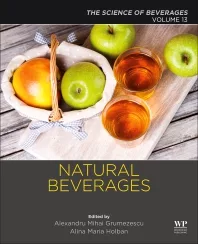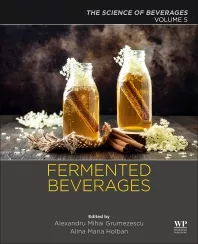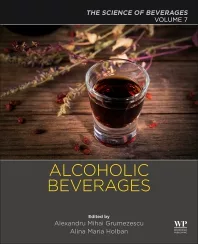Beverages containing immunity-supporting ingredients expected to increase
Peer-reviewed clinical studies important for efficacy, label claims
When it comes to viral infections like the common cold or influenza, washing one’s hands is one of the most common forms of prevention recommended from institutions like Mayo Clinic or the Centers for Disease Control and Prevention. Although hand-washing remains a tried and true practice, consumers also are turning to other solutions to keep themselves in a healthy physical state.
“Immunity is a concern for all ages,” says Cathy Arnold, formulations regional manager for North America for Foritech Premixes by DSM, Schenectady, N.Y. “Whether it is a baby just starting out its life, a growing child, an active adult, or an elderly person, maintaining optimal immune status is important for maintaining health.”
Arnold notes that through Fortitech’s premix development, the company receives a multitude of requests relating to health concerns, including heart health, bone and joint health, and cognitive function. “Baby boomers are the largest consumer demographic for the foreseeable future and embrace the concept of healthy aging,” she says. “Immunity is one aspect of the types of products they are looking for and ideally can be part of a multi-functional product formulation.”
Citing 2012 data from DataMonitor, David Walsh, senior vice president of marketing and communications for Eagan, Minn.-based Biothera, notes that the estimated market value of immune and digestive products in the United States will reach $14.9 billion in 2015 and include an approximately 7 percent compound annual growth rate (CAGR) increase during the next three years.
“Among consumers, immune health is the No. 2 most-desired functional benefit behind general health and wellness,” he says. “In addition, 88 percent of consumers are interested in foods and beverages with immune health benefits.”
Delivering choice, efficacy
Because immune health is not restricted by demo-graphics or other factors, the trend is influencing new developments throughout the food and beverage industries. “Consumer demand for immune health products is prompting discussion among innovative beverage manufacturers,” Walsh explains.
Some examples include energy shots that focus on sustained energy attained through immunity; children’s beverages with more functional benefits; and sports beverages with immunity benefits to help athletes stay healthy in order to support their training efforts, he adds.
Fortitech’s Arnold adds that powdered drinks, waters, juices and milks are categories well-suited to support an immunity-boosting formulation, and some emerging categories could even join the cause. “Interestingly, we are starting to see some oat beverages come into the market, which would be another great vehicle to fortify with immunity-boosting ingredients,” she says.
Although beverage manufacturers are at no loss for categories suitable for immunity-boosting claims, brand owners should ensure that the ingredients they are formulating with are supported by clinical research, Biothera’s Walsh says.
The company’s Wellmune WGP ingredient has had 10 clinical studies — eight published and two pending publication — lending to its efficacy in age groups ranging from toddlers to senior citizens, Walsh explains. “Wellmune boosts or activates innate immune cells that help keep the body healthy,” he adds.
When evaluating the efficacy of an ingredient, Walsh recommends that beverage-makers ask four questions:
- What peer-reviewed research supports the health benefit of the specific functional ingredients under consideration?
- What benefit claims does the research support?
- Are the claims compelling enough to help increase market share?
- Will the claims and supporting research withstand scrutiny from regulators and consumer interest groups?
Walsh also cautions beverage manufacturers about safety, such as whether the beverage ingredient supplier has a generally recognized as safe (GRAS) letter of no objection from the U.S. Food and Drug Administration (FDA) or if it is self-affirmed GRAS. Toxicity studies and a diverse set of product categories and different consumption times also should be examined, he adds.
Another ingredient avenue that beverage manu-facturers can turn to is probiotics. “It is estimated that 80 percent of consumers know what probiotics are and associate them with a health benefit,” says Mike Bush, senior vice president of Ganeden Biotech, Cleveland.
He adds that the global probiotics market for ingredients, supplements and food was approximately $27 billion in 2013 with a CAGR of 6.2 percent expected during the next five years, according to technology market research firm BCC Research, Wellesley, Mass. Because probiotics have a dual function in supporting digestion and immunity, they can offer added functionality to a beverage, Bush notes.
“Consumers continue to look for easy and convenient ways to support their healthy lifestyles, and functional foods and beverages are a great way to receive the desired health benefits without changing their day-to-day routine,” he explains. “The convenience of probiotic beverages especially fits into today’s on-the-go lifestyles.”
To support this trend, the company offers its GanedenBC30 (bacillus coagulans GBI-30, 6086) patented ingredient. The spore-forming organism supports the immune system at 500 million colony-forming units (CFUs) a day and is highly stable through processing, shelf life, and the low pH of stomach acid, Bush says. The beverage ingredient also has been given FDA GRAS status and has 17 peer-reviewed published studies with more in the works, he adds.
“In reference to probiotics specifi-cally, beverage-makers should be aware that not all probiotics are created equal, and when choosing one for their product, it is important that the strain that they choose has the appropriate science backing it and that it’s resilient enough to survive the manufacturing processes,” Bush says.
Beverage-makers also can customize their formulation through premixes to support immunity. For example, carotenoids and vitamins C and E can be utilized to support such a label claim, Fortitech’s Arnold notes.
Clear communication
When working with functional beverages, many brand owners want to communicate those benefits to consumers through marketing and label claims. However, experts caution beverage-makers to ensure that those communications are not confusing to the consumer.
“The product message concerning immune-boosting fortified products will need to be clearly focused depending upon the target group, because the aging baby boomer is more concerned with warding off chronic diseases like heart disease and arthritis, while a mom will likely be more focused on protecting her family from the common cold or other infectious diseases,” Arnold explains.
Biothera’s Walsh adds that those previously mentioned peer-reviewed clinical research studies will offer support to a label claim. For example, research for its Wellmune ingredient supports claims for immunity as well as healthy energy, stress management and sports nutrition, he explains.
Brand owners also can get specific on their label claims to clarify their assessments. With GanedenBC30, a beverage label could state “supports immune health at 500 million CFUs a day,” or “supports digestive health at 1 billion CFUs a day when combined with a healthy lifestyle,” Bush says.
However, to ensure that the formulation supports the label, Fortitech’s Arnold stresses the importance of considering all ingredients when working with such a functional claim.
“Regardless of the benefit of the ingredient you are working with, when more than one nutrient is being added to fortify a beverage, a formulation scientist must consider interactions, both positive and negative, which could take place,” she says.
Because of variable particle sizes, segregation can take place with the ingredient during blending processes. To ensure an adequate blend, she suggests that formulators test all active ingredients and identify potency limits; render all ingredients free-flowing through milling, granulation, making pre-blends, trituration, spray drying or other techniques; use ingredients with consistent or a narrow variation range regarding particle sizes; screen lumpy or cohesive ingredients; add the largest portion first; and for small-quantity ingredients, geometrically dilute.
As consumers continue to show more interest in functional products, consumer packaged goods companies will need to do their due diligence to ensure their formulations support these trends on an efficacious level.
“Of the 88 percent of consumers who are interested in foods and beverages that provide immune support, only 40 percent are actively buying, which creates a huge opportunity for beverages that can offer real immune health benefits,” Biothera’s Walsh says. “Innovative companies that select the right ingredients — those backed by credible science that can offer compelling claims — can close the gap and help define the category.”
Looking for a reprint of this article?
From high-res PDFs to custom plaques, order your copy today!







